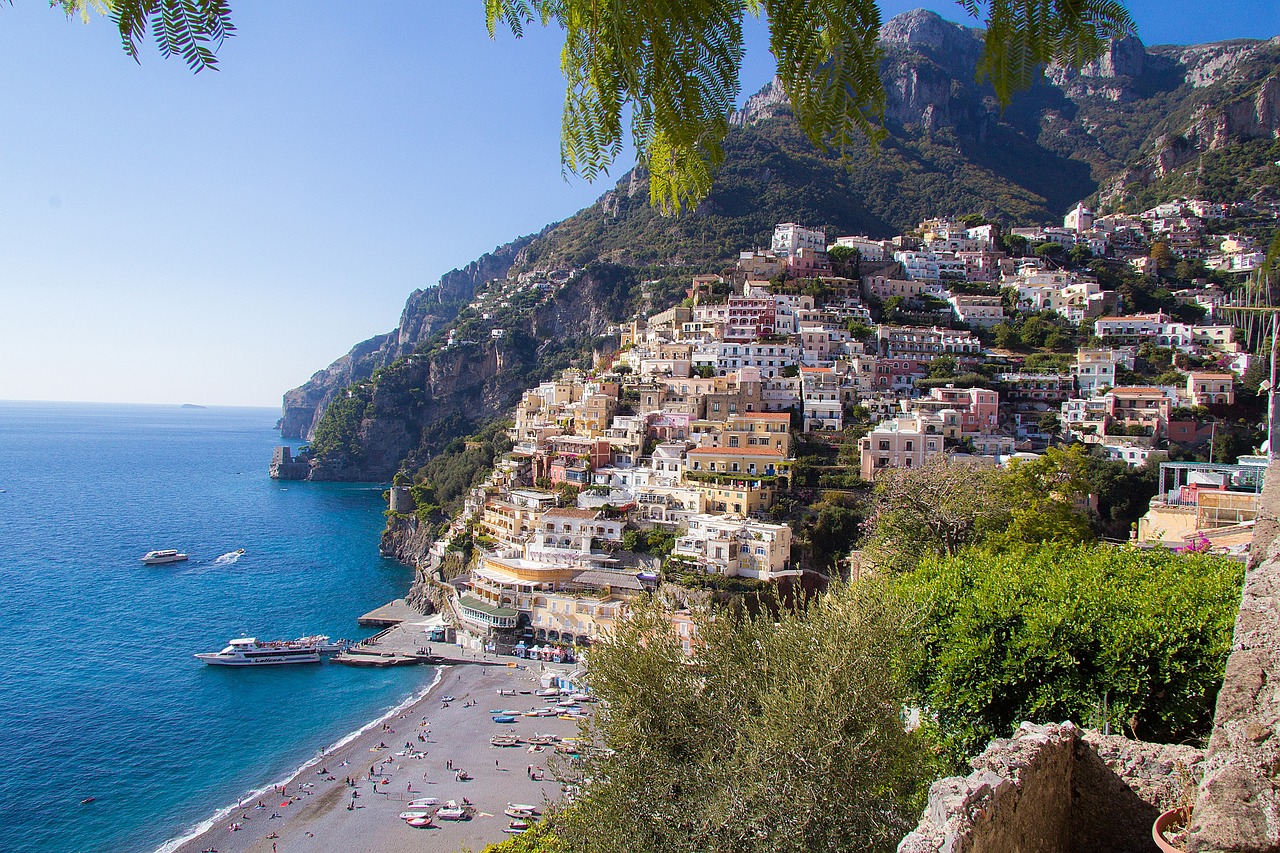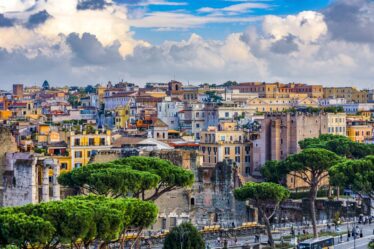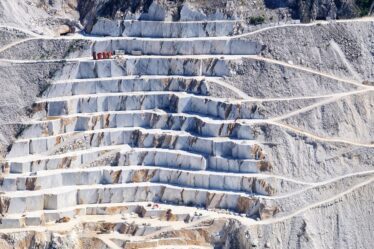
The Amalfi Coast, a stunning stretch of coastline along the southern edge of Italy’s Sorrentine Peninsula, is renowned for its dramatic cliffs, shimmering turquoise waters, and picturesque villages. This UNESCO World Heritage site offers a perfect blend of natural beauty, cultural richness, and historical significance, making it a top destination for travelers worldwide. This comprehensive guide explores the history, geography, culture, and top attractions of the Amalfi Coast, providing an in-depth look at what makes this coastal paradise so enchanting.
History
Ancient Times
The history of the Amalfi Coast dates back to ancient times, with evidence of human settlement from the Roman period. The region’s strategic location made it a crucial point for trade and maritime activities in the Mediterranean.
The Maritime Republic
During the 9th and 10th centuries, the town of Amalfi emerged as a powerful maritime republic. It became one of the leading trading powers in the Mediterranean, establishing commercial ties with the Byzantine Empire, Egypt, and other regions. The legacy of this period is still evident in the architectural and cultural heritage of the area.
Medieval and Modern Eras
Following its peak as a maritime power, the Amalfi Coast experienced a period of decline, exacerbated by natural disasters and pirate invasions. However, by the 19th century, the region began to attract artists, writers, and travelers, captivated by its beauty. Today, the Amalfi Coast is a premier tourist destination, celebrated for its scenic landscapes and charming villages.
Geography and Climate
Geography
The Amalfi Coast stretches for about 50 kilometers (31 miles) along the southern edge of the Sorrentine Peninsula in the Campania region. It is characterized by rugged cliffs, steep hillsides, and a series of small towns and villages that cling to the rocky coastline. The area is renowned for its terraced vineyards, lemon groves, and stunning views of the Tyrrhenian Sea.
Climate
The Amalfi Coast enjoys a Mediterranean climate, with mild, wet winters and hot, dry summers. The best time to visit is during the spring (April to June) and autumn (September to October) when the weather is pleasant, and the tourist crowds are smaller. Summers can be quite busy, but the warm temperatures are perfect for swimming and outdoor activities.
Culture
Language and Religion
Italian is the official language of the Amalfi Coast, and English is widely understood in tourist areas. The predominant religion is Roman Catholicism, and the region is dotted with beautiful churches and religious festivals that reflect its deep spiritual heritage.
Festivals and Events
The Amalfi Coast hosts a variety of cultural events and festivals throughout the year, celebrating its rich traditions and vibrant community life. Notable events include:
- Festival of St. Andrew (Amalfi): Held in June, this festival honors the town’s patron saint with religious processions, fireworks, and traditional music.
- Ravello Festival: An annual summer festival featuring classical music concerts, dance performances, and art exhibitions in the stunning setting of Villa Rufolo.
- Luminaria di San Domenico (Praiano): In August, the town of Praiano is illuminated with thousands of candles in honor of Saint Dominic, creating a magical atmosphere.
Attractions
Positano
Positano, often considered the jewel of the Amalfi Coast, is famous for its colorful cliffside houses, narrow streets, and stunning beaches. Key attractions include:
- Spiaggia Grande: The main beach, perfect for sunbathing and swimming.
- Church of Santa Maria Assunta: Known for its beautiful dome and Byzantine icon of the Virgin Mary.
Amalfi
The town of Amalfi, once a powerful maritime republic, is rich in history and culture. Key attractions include:
- Amalfi Cathedral (Duomo di Amalfi): A stunning cathedral with Arab-Norman architecture, dedicated to Saint Andrew.
- Chiostro del Paradiso: A beautiful cloister adjacent to the cathedral, showcasing Moorish architecture.
Ravello
Ravello, perched high above the sea, is known for its breathtaking views and cultural heritage. Key attractions include:
- Villa Rufolo: A historic villa with beautiful gardens and panoramic views, which inspired composer Richard Wagner.
- Villa Cimbrone: Famous for its Terrace of Infinity, offering some of the most spectacular views on the Amalfi Coast.
Other Notable Towns
- Praiano: A quieter alternative to Positano, known for its beautiful sunsets and charming atmosphere.
- Atrani: One of the smallest towns in Italy, with narrow streets and a picturesque beach.
- Minori and Maiori: Twin towns known for their beaches, lemon groves, and ancient Roman villa ruins.
Unique Experiences
Boat Tours
Exploring the Amalfi Coast by boat offers a unique perspective of its stunning coastline. Various boat tours are available, ranging from short excursions to full-day trips, allowing visitors to discover hidden coves, sea caves, and secluded beaches.
Hiking
The Amalfi Coast is a hiker’s paradise, with numerous trails offering breathtaking views of the sea and mountains. The most famous trail is the Path of the Gods (Sentiero degli Dei), which runs from Bomerano to Nocelle, providing spectacular vistas and a glimpse into the region’s natural beauty.
Culinary Delights
The Amalfi Coast is renowned for its delicious cuisine, featuring fresh seafood, locally grown produce, and traditional recipes. Must-try dishes include spaghetti alle vongole (spaghetti with clams), risotto al limone (lemon risotto), and sfogliatella (a shell-shaped pastry). Limoncello, a lemon liqueur made from local lemons, is a popular after-dinner drink.
Exploring Historical Sites
In addition to its natural beauty, the Amalfi Coast is home to several historical sites. Visitors can explore the ancient Roman villa in Minori, the medieval paper mills in Amalfi, and the historic churches and monasteries scattered throughout the region.
Accommodation
The Amalfi Coast offers a wide range of accommodation options, from luxurious hotels and boutique guesthouses to charming bed-and-breakfasts and vacation rentals. Notable options include:
- Le Sirenuse (Positano): A luxury hotel with stunning views, elegant decor, and top-notch service.
- Hotel Santa Caterina (Amalfi): A five-star hotel offering beautiful rooms, a private beach, and excellent dining.
- Villa Cimbrone (Ravello): An elegant hotel set in a historic villa with breathtaking gardens and views.
Conclusion
The Amalfi Coast, with its blend of natural beauty, cultural richness, and historical significance, offers a truly unique and unforgettable experience. Whether you’re exploring its charming villages, hiking along its scenic trails, indulging in its culinary delights, or simply soaking in the breathtaking views, the Amalfi Coast promises a journey of discovery and enchantment. As one of Italy’s most captivating destinations, it invites you to experience the magic of its Mediterranean allure and the warmth of its Italian hospitality.


